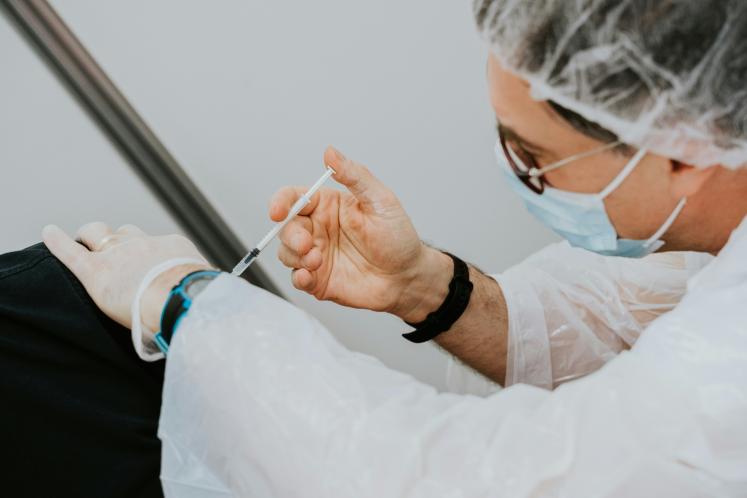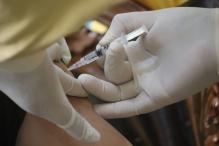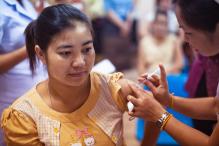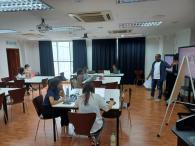1. Health systems are not neutral
Health systems reinforce and rely on structures and processes of oppression and discrimination that exist in society. Gender, or socially constructed characteristics, are learned expectations which shape the roles, opportunities and behaviours of women and men, boys and girls, and people of other genders1. Power relations based on gender, and other characteristics such as class, race, religion, act as barriers to health care access, use, and provision, by creating inequitable access to resources, decision-making power, roles and behaviours2.
2. Gender inequalities affect the entire vaccine value chain
Gender inequalities affect the entire vaccine value chain, starting with production and design all the way through to delivery. For example, women’s limited decision-making power and dependence on men in their households and those in perceived positions of power (e.g., teachers, local healers, religious leaders) can negatively influence their uptake of vaccinations3. Another example is the systematic exclusion of those who are pregnant and lactating from vaccine trials despite the disproportionate risk of infectious diseases on pregnant and lactating people4. Furthermore, opening times and location of services, and how women and gender-diverse people are treated when receiving health services, such as vaccinations, impacts uptake2.
Neglecting intersecting forms of disadvantage and marginalization resulting in insufficient or fragmented vaccination delivery, demand, and access, resulting in gaps in vaccination coverage and hindering the achievement of population-level immunity3.
3. Polycrises are deepening gender inequalities and disrupting vaccination programmes
Concurrent economic, political, climate, conflict and health related crises are severely impacting health service delivery including vaccination programmes and further deepening gender inequalities. For instance, in humanitarian crises, vaccine shortages and rationing can contribute to the perpetration of sexual harassment (including sex for vaccines), abuse, mistreatment and corruption in the health sector 3.
4. Using the Immunization Agenda 2030 as a catalyst for gender equality
The Immunization Agenda 2030 (IA2030) envisions a world where everyone, everywhere, at every age, fully benefits from vaccines to improve health and well-being. To make this vision a reality, tackling barriers related to gender and other intersecting dimensions of discrimination is essential 1. Doing so however, involves focusing not just on outcome measures related to vaccine uptake but also recognising and intervening to disrupt harmful gender-based power structures. For instance, vaccine programmes that target mothers and young girls often overlook the fact that in that decision making autonomy often lies with the husband or male head of household. While vaccination programmes engage with men on women’s and girl’s right to vaccination can address some of the social barriers for women’s uptake of the vaccine, it is critical that these programmes do not reinforce power imbalances but recognise women’s agency 5.
5. Tools to overcome gender-related barriers for equitable vaccine deployment
There are a host of tools one can use to tackle gender-related barriers to vaccine deployment. For instance, a checklist developed by UNU-IIGH and SDG3 Global Action Plan For Healthy Lives and Well-Being for All: Gender Equality Working Group, provides practical actions for countries to implement and ensure gender equality and equity in the deployment of COVID-19 vaccines, which provides transferable lessons for deployment of other vaccines 6.
To find out more about the ways gender issues influence vaccination and immunization coverage and equity, take the course, Addressing Gender Gaps in Vaccinations and Immunization: A Life-Course Approach, co-produced by UNU-IIGH and ADBI, in collaboration with the United Nations Children’s Fund (UNICEF) and Gavi, the Vaccine Alliance 7.
References
1. Why Gender Matters : Immunization Agenda 2030. Accessed May 7, 2024. https://www.who.int/publications-detail-redirect/9789240033948
2. Why does gender matter for immunization? Vaccine. Published online December 10, 2022. doi:10.1016/j.vaccine.2022.11.071
3. Tackling Gender Barriers in COVID-19 Vaccine Delivery. Gender & Health Hub. Accessed April 30, 2024. https://www.genderhealthhub.org/articles/tackling-gender-related-barriers-in-covid-19-vaccine-delivery-and-uptake-in-lmics/
4. Minchin J et al. 2023. Exclusion of pregnant people from emergency vaccine clinical trials: A systematic review of clinical trial protocols and reporting from 2009 to 2019. Vaccine. https://doi.org/10.1016/j.vaccine.2023.06.073.
5. Glinski, A, C Schwenke, L O’Brien-Milne, K Farley. Gender Equity and Male Engagement: It only works when everyone plays. 2018. https://www.icrw.org/wp-content/uploads/2018/04/ICRW_Gender-Equity-and-Male-Engagement_Full-report.pdf.
6. Guidance note and checklist for tackling gender-related barriers to equitable COVID-19 vaccine deployment. United Nations University. Published June 6, 2021. Accessed May 8, 2024. https://unu.edu/iigh/brief/guidance-note-and-checklist-tackling-gender-related-barriers-equitable-covid-19-vaccine
7. Gender and Childhood Immunization: A Pathway to Achieving Coverage and Equity. Course presented at: Addressing Gender Gaps in Vaccinations and Immunization: A Life-Course Approach. Accessed April 30, 2024. https://elearning-adbi.org/courses/addressing-gender-gaps-in-vaccination-immunization-a-life-course-approach/lessons/gender-and-childhood-immunization-a-pathway-to-achieving-coverage-and-equity/




